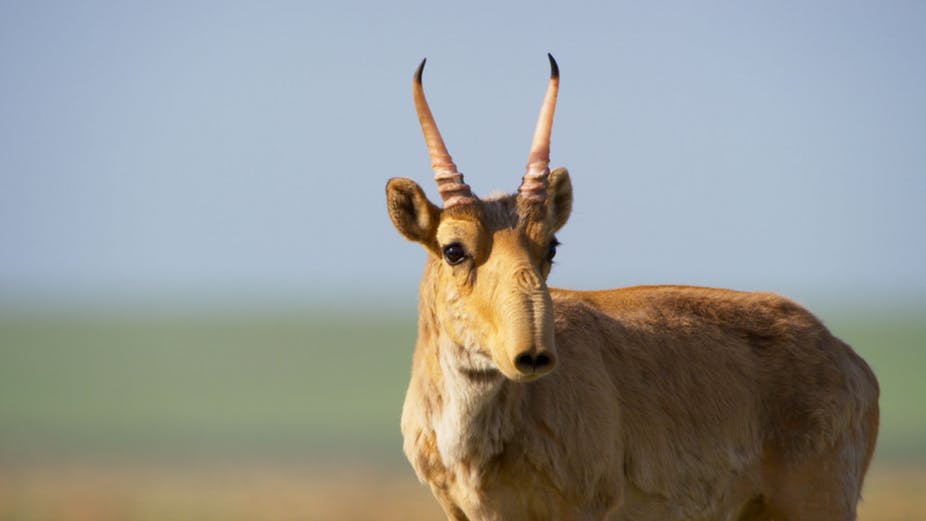
Mysterious weather activated bacteria lead to death of ‘200000 Endangered Saigas’
A mysterious mass death of 200,000 endangered Saiga antelopes in Kazakhstan happened in the month of May in 2015. Scientists from all over the globe were baffled by the sudden demise of such a large fraction of the Saiga. They just collapsed on the ground and died all of a sudden which led to the end of a large fraction of the overall global population of these endangered antelopes. Scientists estimated the cause of this mass death to be infection by a certain strain of bacteria. However, the cause of the death of Saigas was deeper than just a bacterial infection. Other factors such as abnormally increased humidity and intense temperatures were responsible for increasing the effect of bacterial infection.
Scientists suspect the unchecked environmental change due to global warming to be the causal factor that triggered the growth of the bacteria that killed these antelopes. However, the same hasn’t been confirmed and needs more research for the same. Researchers predicted that this unusual death might occur again because of the climatic changes occurring in the region where once these antelopes used to thrive.
The lead author of the study from the Royal Veterinary College London, named Prof Richard Kock who was one of the members of the emergency response team explained this event was something out of the ordinary. This kind of mass death isn’t expected by any bacterial ailment of this variety. He also said that this event might happen again in future.
A statistical analysis of the environmental conditions in the area was done by the team which led to the confirmation that the temperatures were significantly higher than normal with excessive humidity that helped the growth of bacteria in the animal.
This wasn’t the first event of mass die-off for the antelopes. Two such events occurred in the past in the year 1981 as well as 1988 in the central Asia area. The association between climatic factors and bacterial attack is still unknown and needs an in-depth research of the same. The past two events were also linked with unusual temperature changes.
Apart from bacterial infection, these antelopes are ranging towards a critical stage leading to extinction due to poaching as well as diseases acquired via livestock. Researchers also predict a possible extinction of the species in future. Other species like the reindeer are also vulnerable to mass death incidents.
The findings of this research were published in the journal named Science Advances which stated that the Saiga dropped dead in a large area covering central Kazakhstan. A study into the cause of death estimated that this was due to blood poisoning that was caused by a bacterium that is found naturally in these antelopes. These bacteria are normally harmless to the animals.
Steffen Zuther, Co-researcher of the Frankfurt Zoological Society/ Association for the Conservation of Biodiversity of Kazakhstan stated that these mass death events pose a significant threat to the antelopes which can easily wipe out the decades of efforts to conserve the population of Saiga.
He further explained that the mass mortality via climatic changes cannot be controlled, however, it is important to maintain a sufficient number of the population to ensure they don’t go extinct. This event is majorly catastrophic for the long-term existence of an almost extinct species. The Saiga antelopes thrive mostly in the grasslands from Central Asia area. They can usually be seen in large herds that contain more than thousands of antelopes in a group.
As confirmed by the International Union for the Conservation of Nature, these antelopes are at great risk from poaching for horns that are used in traditional Chinese medicines along with danger from habitat loss as well as fires on grasslands.


